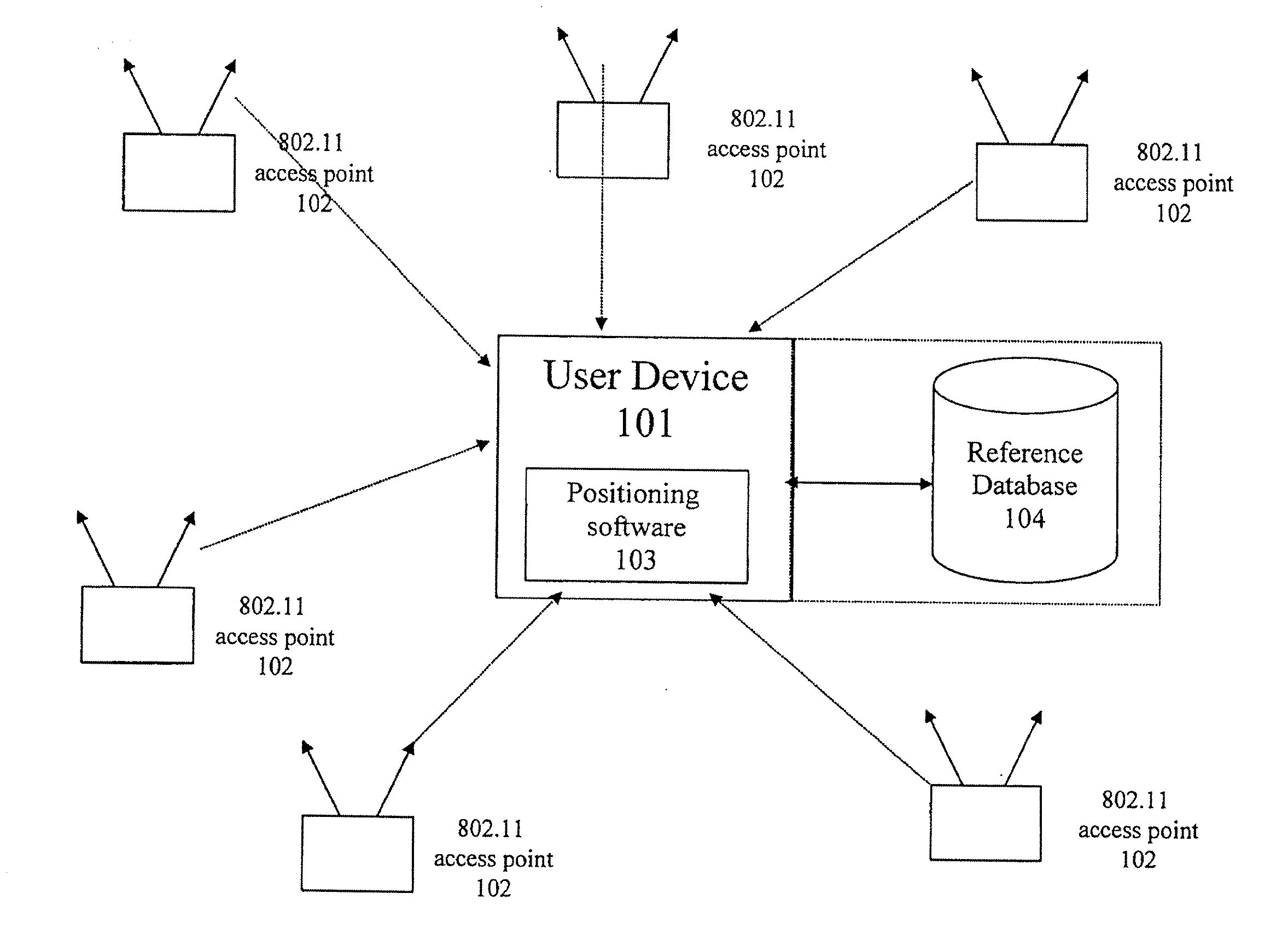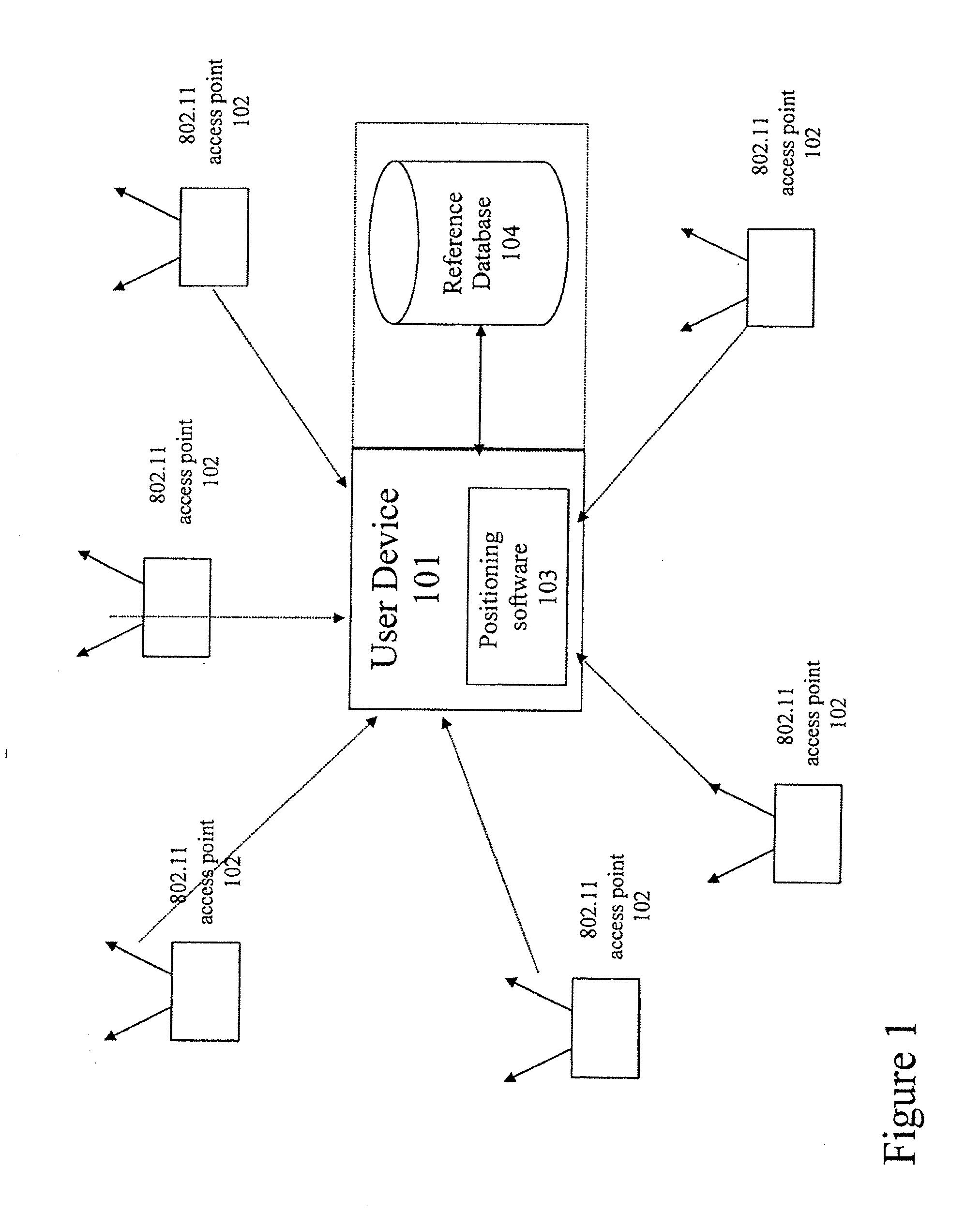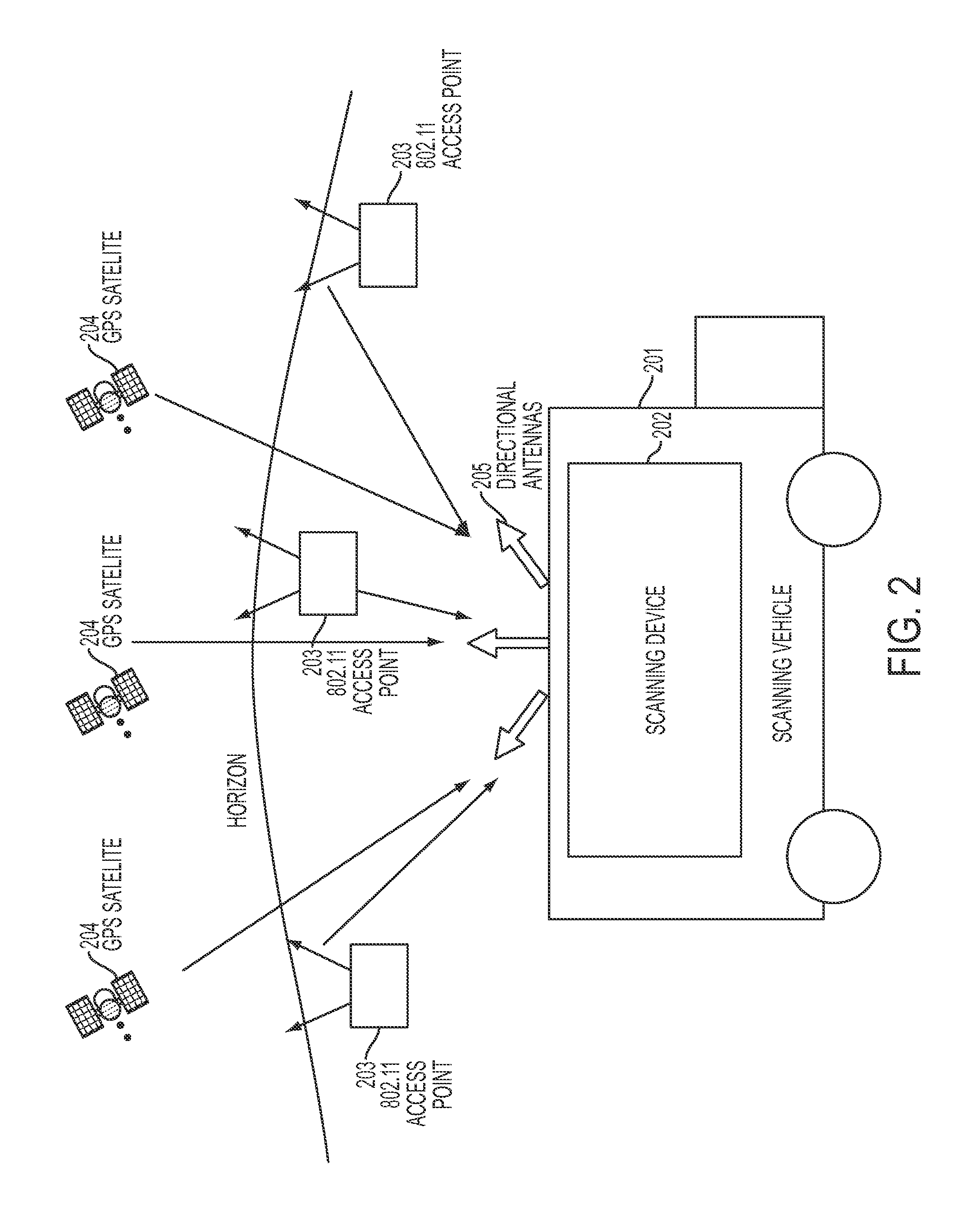Method and system for selecting and providing a relevant subset of wi-fi location information to a mobile client device so the client device may estimate its position with efficient utilization of resources
a technology of wi-fi location information and mobile client device, applied in the direction of location information based service, network topology, instruments, etc., can solve the problems of substantial errors, interfering with the process, and confusing the receiver, so as to achieve efficient management and distribution of wi-fi location data, and the cost of mobile resources and services
- Summary
- Abstract
- Description
- Claims
- Application Information
AI Technical Summary
Benefits of technology
Problems solved by technology
Method used
Image
Examples
Embodiment Construction
Introduction
[0053]Preferred embodiments of the present invention provide a Wi-Fi positioning system (WPS) used to estimate the geographic location of mobile devices. A WPS includes a database of known access point (AP) locations that are used as reference points in estimating the client's location. Preferred embodiments maintain a cache of Wi-Fi access point data on the client device. Under this approach, the server sends the client a subset of the Wi-Fi access point database containing Wi-Fi access points that are in the general vicinity of the client device. The client stores this information in its local memory cache, where it can be used to satisfy subsequent location requests. If the client device finds that the cache does not contain the information necessary to locate itself or that the data in the cache is out-of-date, or if the client anticipates that more data will be needed in the near future, it supplements the cache by downloading the required data from the access point...
PUM
 Login to View More
Login to View More Abstract
Description
Claims
Application Information
 Login to View More
Login to View More - R&D
- Intellectual Property
- Life Sciences
- Materials
- Tech Scout
- Unparalleled Data Quality
- Higher Quality Content
- 60% Fewer Hallucinations
Browse by: Latest US Patents, China's latest patents, Technical Efficacy Thesaurus, Application Domain, Technology Topic, Popular Technical Reports.
© 2025 PatSnap. All rights reserved.Legal|Privacy policy|Modern Slavery Act Transparency Statement|Sitemap|About US| Contact US: help@patsnap.com



